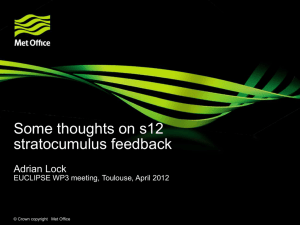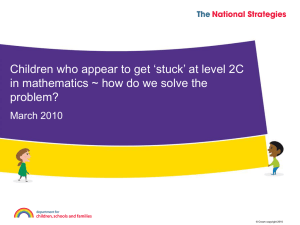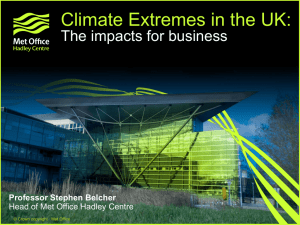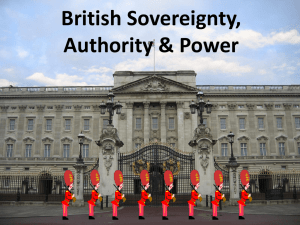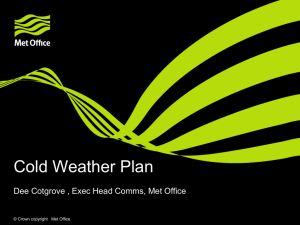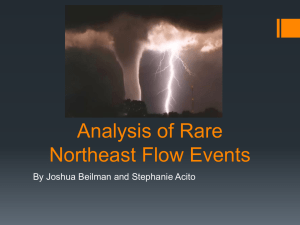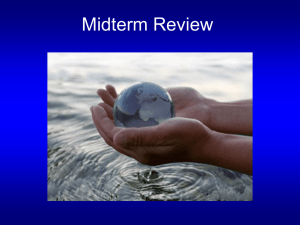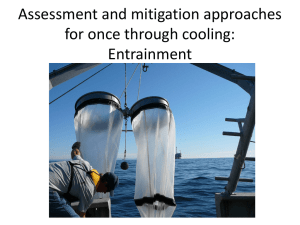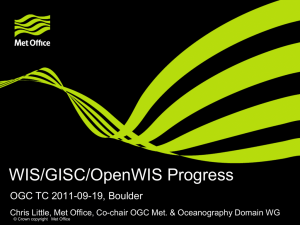Alison Stirling
advertisement
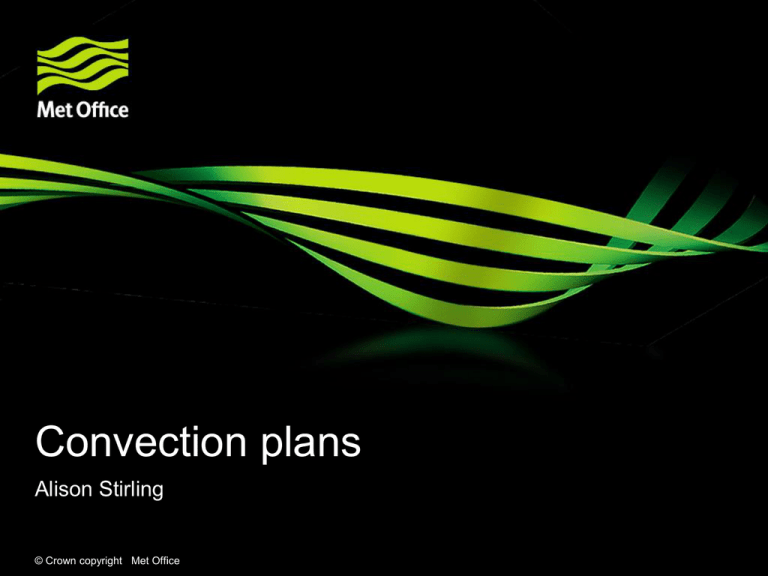
Convection plans Alison Stirling © Crown copyright Met Office Priorities for convection parametrization Main Systematic Errors: Diurnal cycle MJO Monsoons AEW coupling Feedback with `large-scale’ environment © Crown copyright Met Office Transient response to boundary layer Interaction with large scale Ascent generates CAPE Heating generates ascent Depth and amplitude of convective response key to improving monsoon, MJO, AEW coupling © Crown copyright Met Office Interaction with large scale progress and further work: Increased entrainment improves coupling between convection and large-scale (Klingaman et al 2013) Introduce physically realistic entrainment dependence: (stability and cloud area) …but it can’t be high all the time… Explore effects of large scale on other parts of scheme UM high resolution convection simulations over a large domain allows circulations resulting from convection to develop. © Crown copyright Met Office Interaction with boundary layer Introduce energetics of boundary layer thermals Modify triggering and closure to have dependence on this Cold pools Important for: 1. Triggering and closure Additional KE to overcome CIN Temperature and moisture differences allow CAPE to be present locally even when the mean state is stable Enhanced lifting 2. Entrainment affects cloud area (and therefore buoyancy and vertical velocity) Two zones of temperature and moisture Requires memory of previous precipitation events MOAP secondment to work on cold pools © Crown copyright Met Office Research areas 1. Entrainment / detrainment •Dependence on cloud area •Dependence on stability •Adaptivity 2. Interaction with large scale •What is the profile of ascent caused by convective heating? •How does ascent affect closure and at what levels is it important? 3. Interaction with boundary layer •Representing energetic response to CIN •Representing cold pools 4. Memory •Relative importance of cloud area, rh variability, BL variability •Prognostic for cloud area 5. Closure •How do surface processes and upper level processes combine? © Crown copyright Met Office Convection position available! Higher resolutions See www.metoffice.gov.uk/about-us/jobs/ Closing date: 14th July 2013 • Mass flux: Separate into component parts • vertical velocity, cloud area, and cloud number • Multiple plume: Quantify the need for a multi-plume approach Allows: •grid-size sensitivity, •inclusion of microphysics •better coupling with PC2 •stochasticity Applications submitted for Reading and Leeds CASE students to work on different aspects of grey-zone problem. © Crown copyright Met Office Questions and answers © Crown copyright Met Office Unification Give each component of the existing convection scheme an improved physical basis. • Entrainment: Include dependence on stability and cloud area • Detrainment: Reformulate to be adaptive all the way up the cloud, and let the level of adaptivity depend on cloud area • Triggering and closure: Base on energetics of boundary layer processes and large-scale ascent © Crown copyright Met Office Unification details Research areas include: •Cloud area representation •Cold pool representation •Boundary layer thermal energetics •Convective response to large-scale ascent © Crown copyright Met Office UM run Stu Webster • • • • Indian Ocean 200m from 2.2km b.c.s 4000 x 2600 points 3 days • http://www-hc/~hadsw/dkrf/gifs/dkrfw.10000.full.gif © Crown copyright Met Office What controls convective depth? • Vertical extent of CAPE • Entrainment • Detrainment High entrainment increases coupling to LS ascent/ descent, but it can’t be high all the time! © Crown copyright Met Office Cloud area? Boundary layer processes? (e.g. cold pools) What controls heating amplitude? • Closure Rate of CAPE creation? Inversion removal? © Crown copyright Met Office Ascent?


